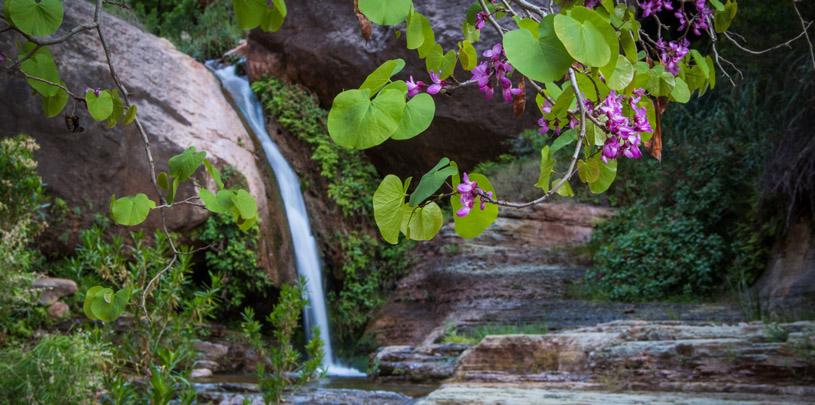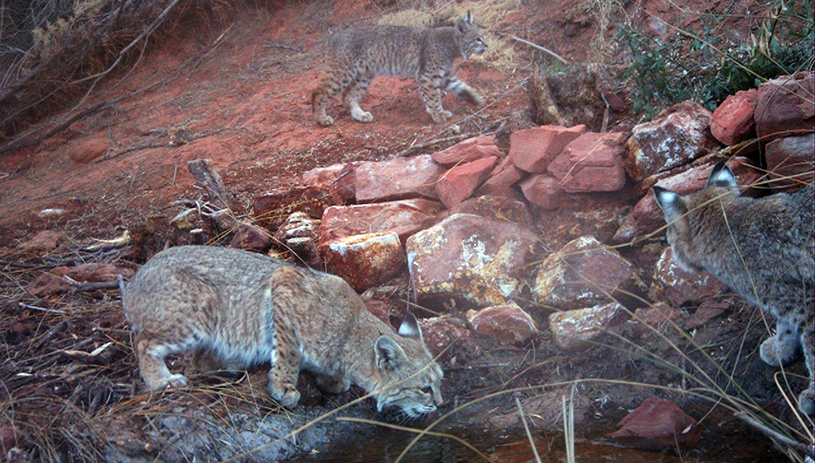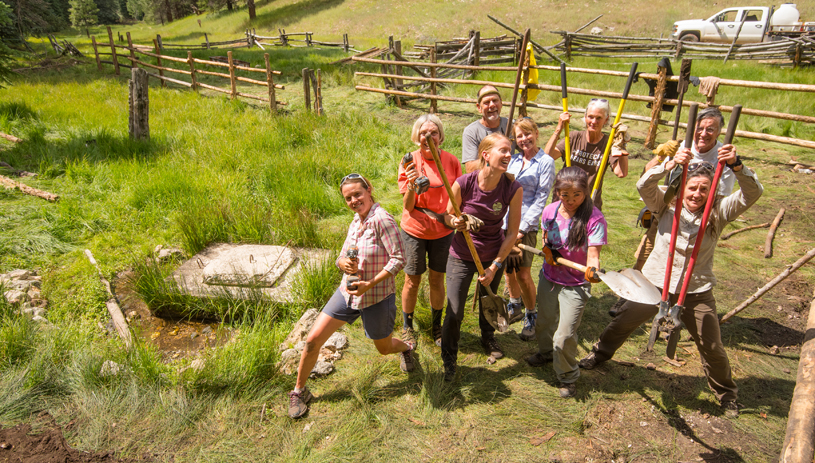
 by Cerissa Hoglander, Climate Resilience Director
by Cerissa Hoglander, Climate Resilience Director
Springs — where groundwater bubbles up to the Earth’s surface — are some of the most unique and important environments in the arid Southwest. They are also some of the most threatened. Springs and the wetland habitats they support are vulnerable to overuse and degradation, and a warming climate amplifies the stresses on these environments.
Yet springs are the lifeblood of the Colorado Plateau’s forests, canyons, and communities. Protecting the health of springs is vital in our increasingly water-scarce lands.
Here are five facts about springs in the Southwest.
 Bobcats drink water from a spring in northern Arizona.
Bobcats drink water from a spring in northern Arizona.
There are more than 11,500 springs across the Colorado Plateau with close to 750 in Grand Canyon National Park alone. Across the plateau, springs are often the only source of water for miles. Humans have been connected to springs for millennia. Many springs in the Southwest have deep social and cultural significance and are sacred to Native peoples. Springs also contribute essential farming and drinking water resources, form headwaters of flowing streams, and provide watering holes for migrating animals.
Learn about Grand Canyon seeps and springs ›
 Springs are home to the cave primrose, found only on the Colorado Plateau. MIKE POPEJOY
Springs are home to the cave primrose, found only on the Colorado Plateau. MIKE POPEJOY
Though springs cover small areas, they sustain a disproportionately large number of species. As “biodiversity hotspots,” springs provide habitats for a wide variety of plants and animals — some of which may occur nowhere else in the world. They can be permanent homes for tiny springsnails and oases for wider-ranging animals like bobcats and desert bighorn sheep. As climate change alters where and how plants and animals can thrive, healthy springs serve as important refuges.
From groundwater pumping, to mining, to livestock grazing, we place huge demands on our springs. Here’s what springs are facing on the Colorado Plateau:
Take action. Permanently protect the Grand Canyon from uranium mining ›
Springs and wetlands are barometers for the health of the broader landscape. Forests, canyons, and other lands with healthy springs are more likely to be resilient to warmer, drier conditions. Despite the small area they cover, springs have an outsized, positive influence on surrounding areas and the plants and animals that rely on them.
 Volunteers protect a spring source. BLAKE MCCORD
Volunteers protect a spring source. BLAKE MCCORD
The majority of documented Colorado Plateau springs are on public lands. We’re working with land managers to understand threats to springs and wetland habitats on public lands and advocate for greater protections. We work with volunteers to assess the conditions of springs and identify needs, and we team up with land managers, experts, and other stewards to restore habitats. There’s still much work to do.
Sign the petition. Drought is stressing groundwater and the Colorado River, which provides water to 40 million people and 5.5 million acres of agriculture across 30 tribal nations, seven U.S. states, and Mexico. Speak up for the Colorado River.
Did you know the Colorado River used to be called the Grand River? Learn about the name change and more fun facts about this hardworking river.
Read MoreChallenging conditions have endangered, threatened, or imperiled these five native fish in the Grand Canyon.
Read MoreBeneath the bathtub ring at Lake Powell, native plants are flourishing, cultural sites are resurfacing, and whitewater rapids are returning.
Read More